Post compiled by Jesse Benefiel, Vice President, PSU Neuroscience Club
It’s easy to look at the mechanics of neuroscience and wonder how working scientists do it. Analyzing what those quadrillion synapses mean, studying exceedingly complex systems, using – dare I say it – math; it’s not exactly what everyone might label a good time. But there is a lot more to the field (including big questions, gripping insights, therapeutic advances, gorgeous images, awe, accomplishment, wonder, joy,…) – and we like to prove it! How?
Pipe-cleaners!
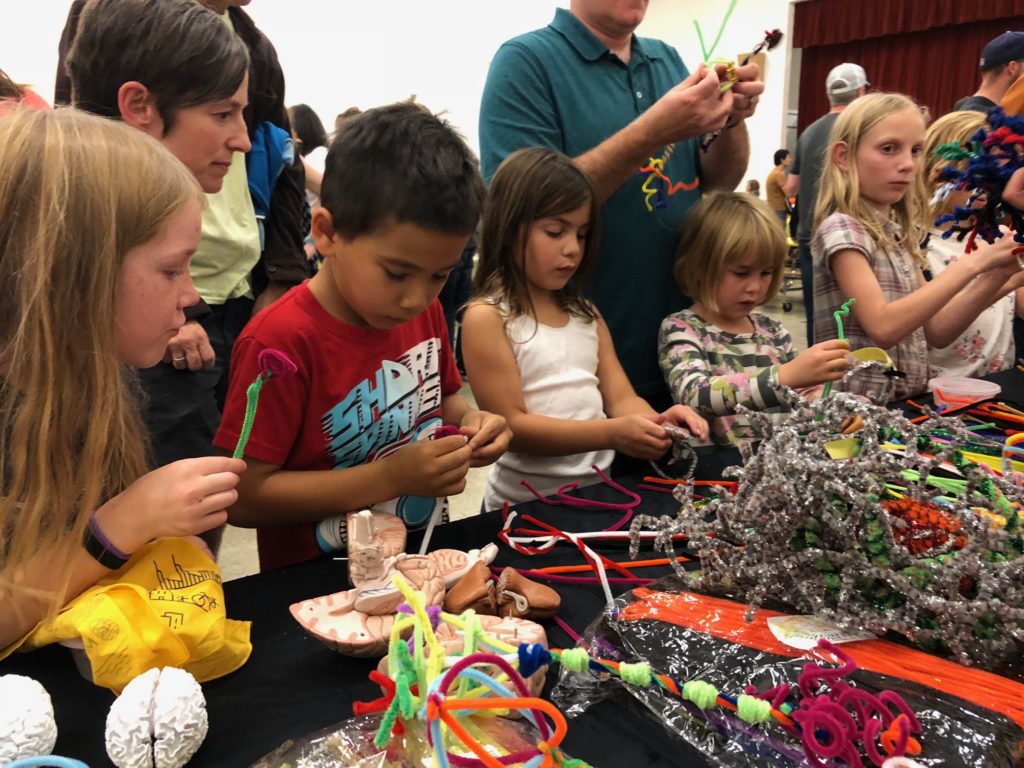
What better way to show that art can be incorporated into neuroscience, while making the field accessible and fun – than by making one’s own personal brain cell out of bendy, colorful rods? At the 2018 Society for Neuroscience conference, where incredible discoveries were presented, this is exactly what NW Noggin and the Portland State University Neuroscience Club did!

LEARN MORE: Noggins & Noodles @ SfN!
LEARN MORE: Synapsing in San Diego @ SfN!
Below you can see some examples of what we crafted and why…


Neuron over San Diego!
Mary Lerner, Science Officer
What it is: Generic CNS neuron


One of two major cell categories that make up the nervous system (the other are glial cells, or glia), neurons are often depicted with many branches. The majority of neurons are multipolar, with multiple branching dendrites leading off a cell body (or soma) to receive signals, and another branch known as the axon which can itself fork further (forming axon collaterals), with the branches ending at axon terminals to send out chemical messages to other neurons.

MULTIPOLAR: So many dendrites, plus an axon, means multiple “poles…”

These plentiful, remarkable cells are used to relay informative signals around the body so that we can perceive, act, think, feel, survive – and thrive.
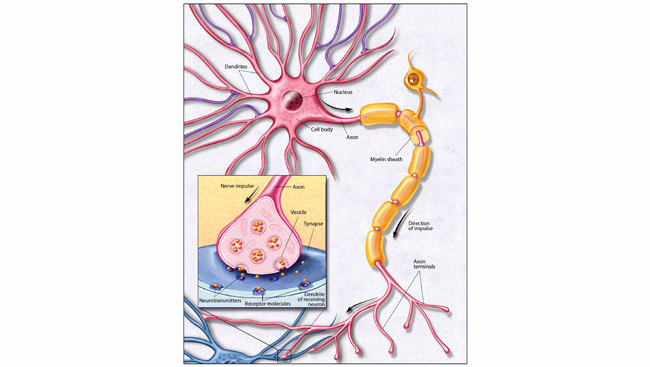
LEARN MORE: The Neuron
Why she made it: Why elaborate on perfection? This is just your run-of-the-mill neuron that you’ll see diagrammed in most basic biology textbooks. Of course, just because it’s a basic version doesn’t take away from its complexity. Remember, neurons are among the most unique cells you have, essentially acting as the circuits and mainframe of everything that you are. The one Mary made in particular demonstrates the detail and time that can be put into these pipe cleaner cells.
In fact, this one was so popular that someone bought it from her for $50!
Jonathan Uriarte, General Officer
What it is: Generic lower motor neuron
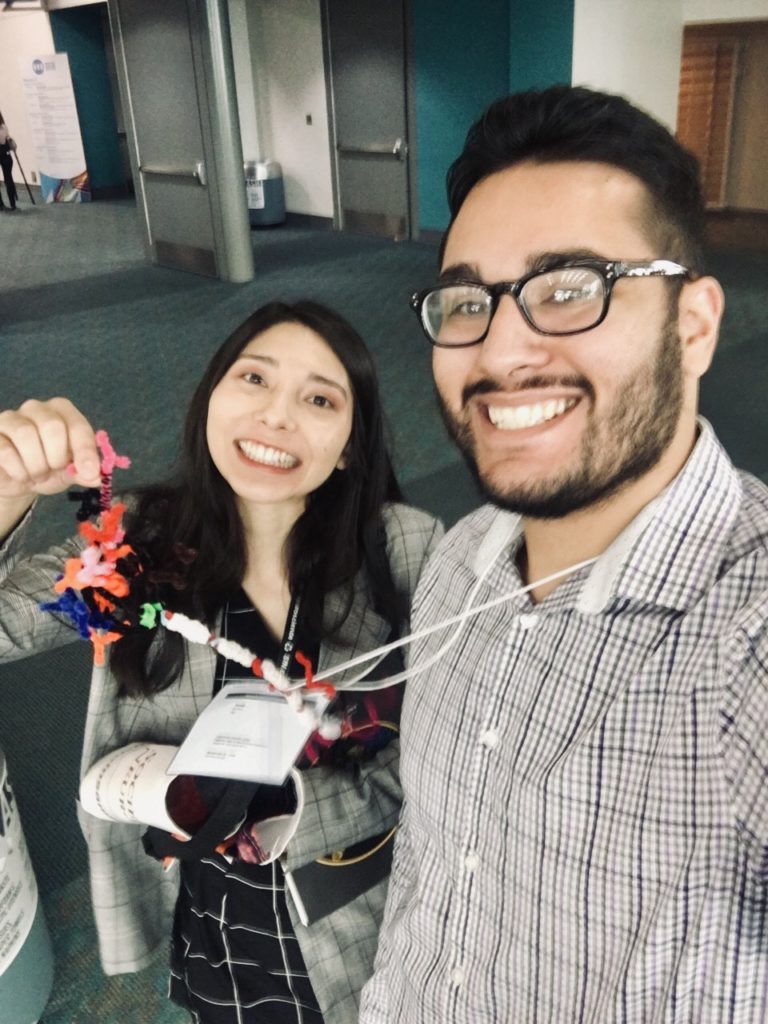
Unlike sensory neurons which bring body signals to the spine and brainstem, lower motor neurons are the cells which move our muscles so that whatever our brains want to happen can happen. This neuron is one that connects to a skeletal muscle, so that it will contract and our body will move.

Moving – thanks to motor neurons!
LEARN MORE: Motor Neuron-Muscle Relationships
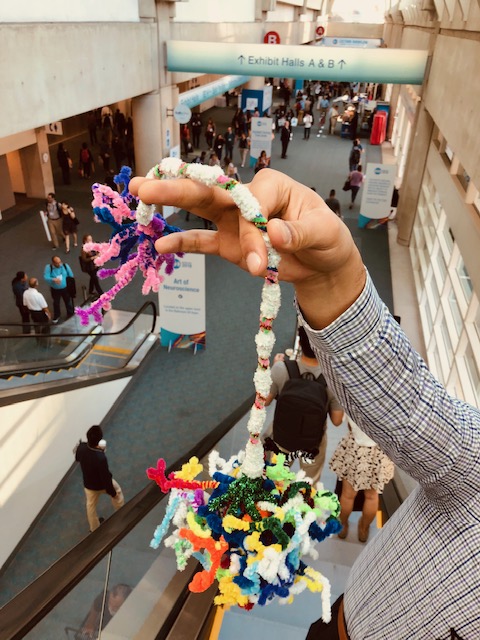
Why he made it: Like many neurons made out of pipecleaners, this one doesn’t necessarily have a whole backstory. It’s not too complicated, it’s aesthetically pleasing, and it’s definitely fun to make. According to Jonny, if it must have a backstory, then let’s say it’s a motor neuron in charge of contracting our muscles. Get swoll!
Louie Sumrall, President
What it is: Retinal Bipolar Cell
The retinal bipolar cell is, as its name suggests, bipolar. This means that one side of its cell body/soma has one projecting process (for input), while the other side has a second process with axon terminals (for output). The retinal bipolar cell receives inputs from the synaptic activity of both rod and cone photoreceptor cells (the sensory neurons for vision), as well as from other retinal neurons known as horizontal and amacrine cells…

LEARN MORE: The Organization of the Retina and Visual System
These impulses are then transmitted by the output process of the bipolar cells to retinal ganglion cells for transfer along the optic nerves further into the brain.

An S-type (short wavelength, blue) cone photoreceptor, which connects to bipolar cells
LEARN MORE: Retinal bipolar cells: elementary building blocks of vision

Why he made it: It’s sometimes easy to forget that neurons come in more shapes besides the shooting-star-shaped ones we’re all familiar with. And I’ll be the first to tell you that, when it comes to science, Louis does it with flare. Louis used to study these retinal bipolar cells in the lab, but aside from that, his other reason is, “their dendrites are nice and stubby.” Seems fair.
Jesse Benefiel, Vice President
What it is: Rosehip Neuron

The rosehip neuron was discovered this year, and is (as far as we know) unique to humans (and possibly other primates). As an interneuron, it exists between afferent inputs and motor output cells, and, being GABAergic, it is able to inhibit the activity of other neurons. Its name refers to its bulby dendritic extensions, which resemble the little stubs of rosehip fruit.
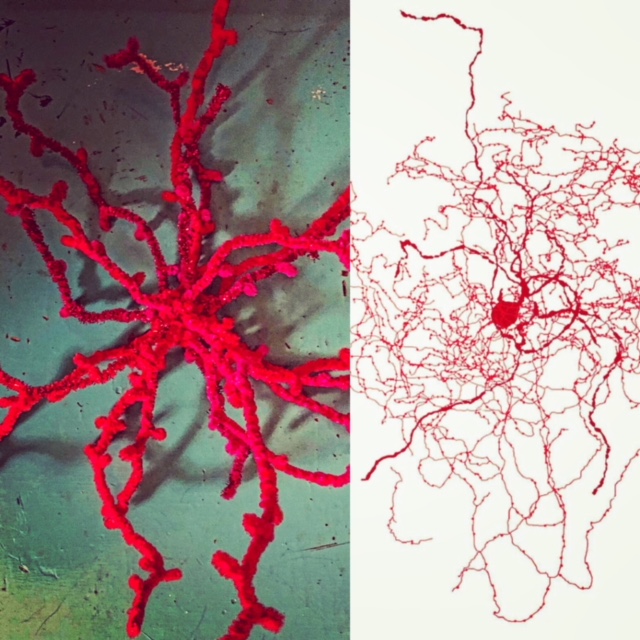
LEARN MORE: Rosehip neurons in pipe cleaners!
LEARN MORE: Meet the Rosehip Neuron: A Newly Discovered Cell in the Human Brain
LEARN MORE: GABAergic neurons and their role in cortical plasticity in primates

Rosehip neuron synapsing with a cortical pyramidal cell…
Why he made it: This is a newly identified neuron, which is exciting because there are still many discoveries to be made. There is still a lot about this cell that’s unknown, meaning I have less to study. It is very unique in appearance, so it seemed like an interesting neuron to create for SfN.
Aaron Eisen, Outreach Coordinator
What it is: Purkinje Cell

The Purkinje cell is an inhibitory GABAergic neuron which plays an important role in motor control. It is also one of the largest neurons found in the human brain!

Purkinje cells are located in the cerebellum, where the majority of all neurons in our brains are found! While most neurons receive up to 10,000 distinct synaptic connections, the Purkinje cell has up to 200,000!
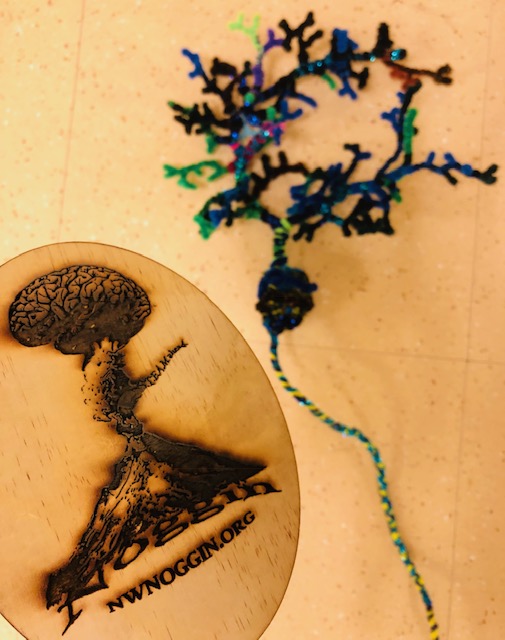
LEARN MORE: Circuits within the Cerebellum
Why he made it: Because of its dendrites! It has a LOT of them which extend far longer than your average neuron. If you like dendrites, this is the high end of the spectrum. After Purkinje, you’ll be rather disappointed with simpler unipolar and bipolar cells…

MAKE YOUR OWN: MAKE Pipe Cleaner Neurons
LEARN MORE: STEAM Art Projects



